Diffuse Knapweed
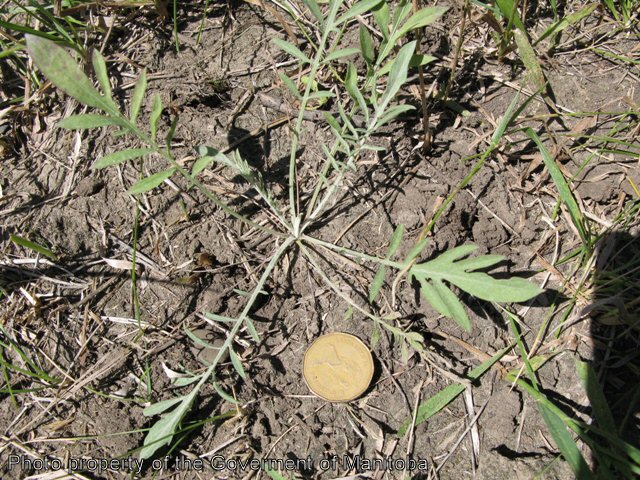 click to enlarge |
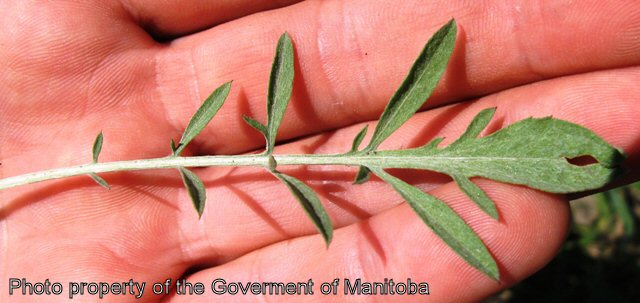 |
 |
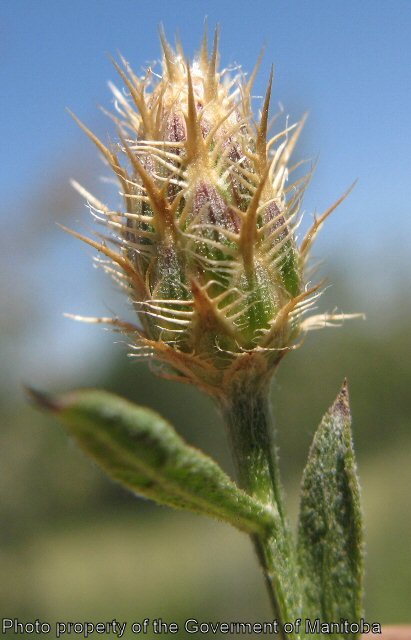 |
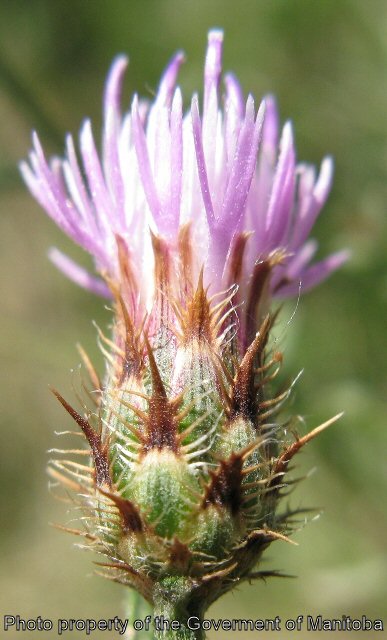 |
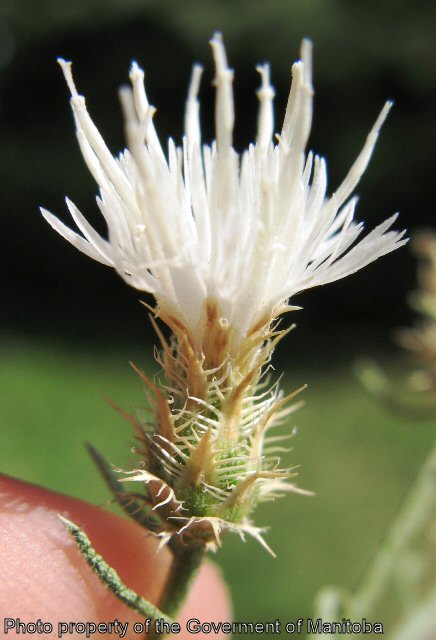 |
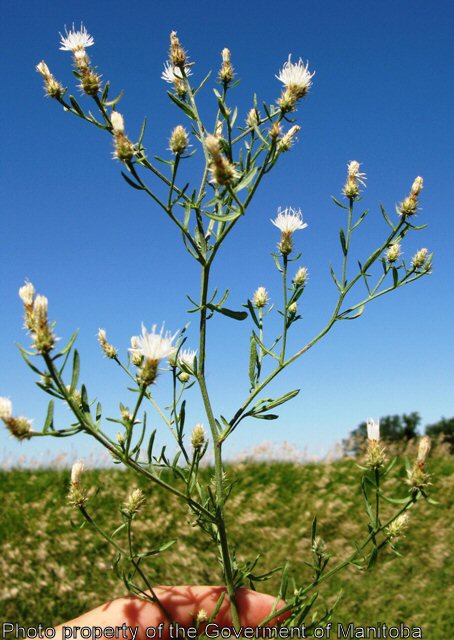 |
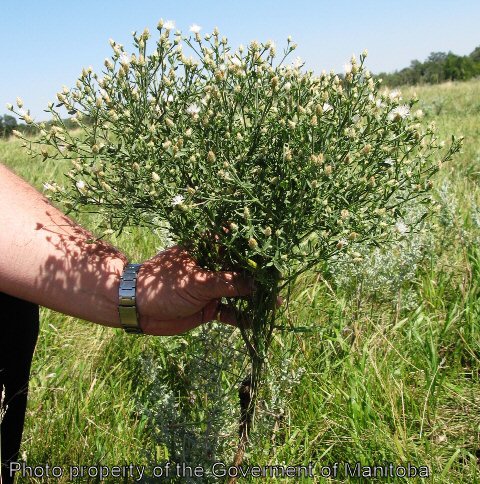 |
Biology
Diffuse knapweed is an annual, biennial to short-lived perennial, reproducing by seeds. The stems are erect, 50-80 cm tall, dull greyish-green, and highly branched. The lower leaves are finely pinnately divided, alternate, and form a rosette. The upper leaves are reduced in size, alternate, and often not divided. The flower heads are numerous, radiate, 3 mm in diameter, narrow into stiff spines, and creamy white or occasionally purple in colour. Achenes are 3 mm long, black to brown in colour with several whitish longitudinal lines.
Diffuse knapweed invades rangelands eliminating native forage species.
Scouting Techniques
Take a minimum of 20 weed counts across the field. This weed is more common in established pastures.
Effects on Crop Quality
Inhibits the growth of desirable plant species by allelopathic effects. Decreases the availability of more desirable forage species to livestock because of its dense spiny over-story. Causes mechanical injury to the mouths and digestive tracts of grazing animals.
Threshold/Yield Loss
Causes yield losses in forage crops.
Control Tips
- Group 4 herbicide application
- deep ploughing (18 cm)
- mowing, reduces seed production
